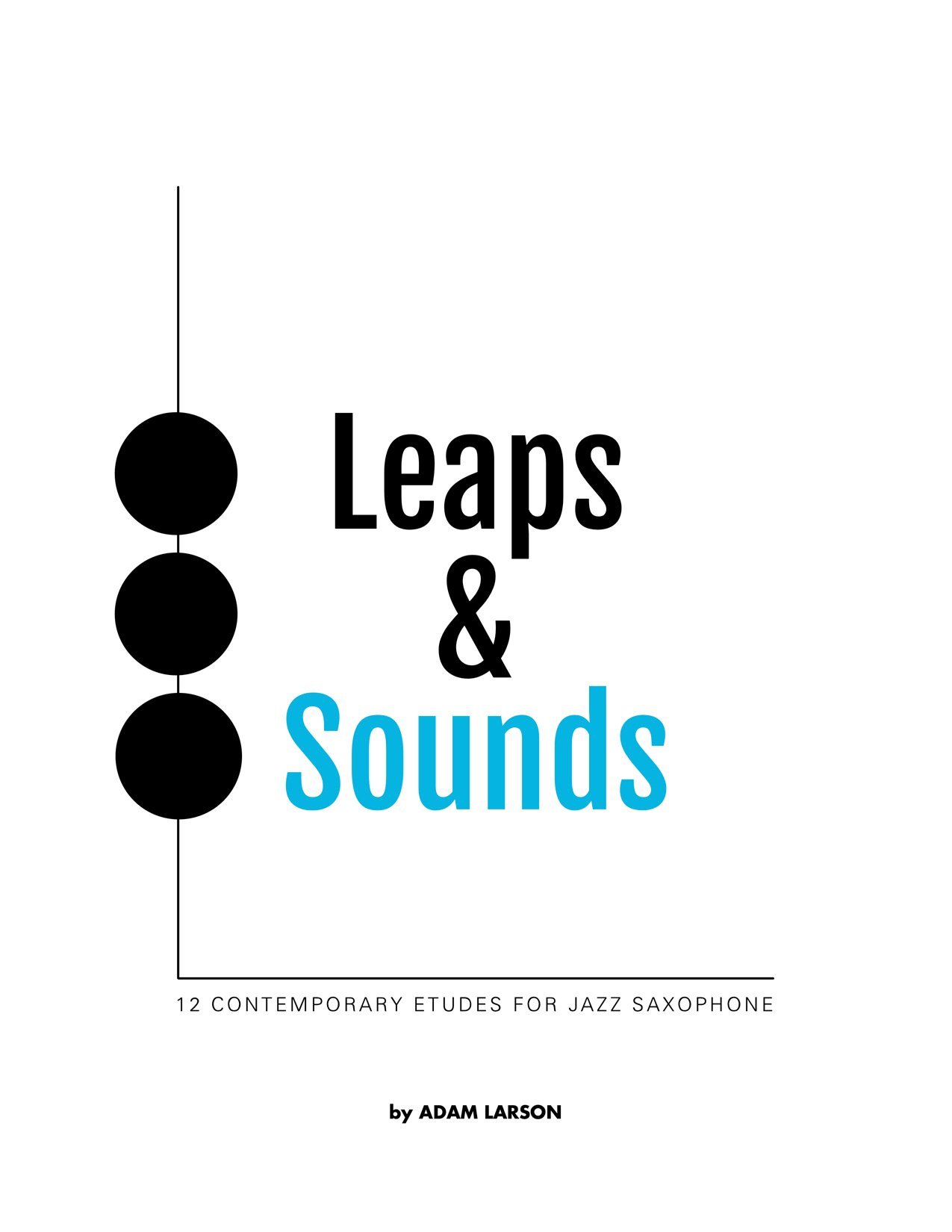Vandoren Artist Profile | Adam Larson
Date Posted: August 29, 2018

1. When did you decide you wanted to be a musician?
I decided that I wanted to be a musician when I was 14. I had been interested in sports and I was a competitive chess player from age 6-12, but once I got into middle school, I quickly decided that my focus would be on music. I played my first gigs around the age of 12 and once I started playing with musicians older than me, I became very inspired to practice and get as good at saxophone as I could. By the time I was in 8th grade, I knew that if I could, I wanted to try to pursue music in college and hopefully, professionally.
2. Who are your musical inspirations?
I have several. I’m of course heavily influenced by a slew of saxophonists; Joe Henderson, John Coltrane, Sonny Rollins, Lester Young, etc. Of the more modern players, Chris Potter, Seamus Blake and Ben Wendel certainly come to mind. I would say that Michael Brecker is the reason that I got deeply interested in the tenor saxophone at age 13, and all of the modern saxophonists I listed above, are certainly influenced in one way or another by Brecker’s playing and composing, I think. Beyond those listed, I’m inspired by my peers- Lucas Pino and Alex LoRe, are a few that come to mind immediately here in NYC. I’m also inspired by a lot of music that isn’t jazz…I like a lot of old school hip-hop, rap and rock and roll. My parents were never into rap, but I grew in a household where there were always different styles of music on the stereo and I attribute my initial interest in music to growing up in that environment.
3. What are the greatest challenges you have faced as a musician and how have you overcome them?
Honestly, just keeping a good attitude and remaining strong mentally. You have to take care of the music or nothing will happen for you. So, it’s often hardest when you feel as though you are taking care of the music- doing all the right things- and your definition of success doesn’t exactly correspond. Often times, it’s never as bad as it might seem in that exact moment, but it can be very hard to have a healthy perspective in those moments of self-doubt; of which there have been many for me thus far in my career. I think it’s extremely important to avoid comparing and despairing- no individuals successes or failures are yours, so it is pretty pointless to put too much worry into what others are doing. This is singlehandedly the hardest piece of my own advice to follow, but I’m slowly getting better at it.
Practically speaking, making a living as a musician is not easy, but I’d like to be optimistic and let readers knows that it is in fact possible, but you have to be willing to do more than everyone else, all the time. Obviously this is a hyperbolic statement, but I know I can see a direct correlation between my busiest times of the year and the work I’ve done to put all of those opportunities (education, performance, composing), versus those times that are slower, which if I’m doing my job to the best of my abilities, are few and far between.
4. What does your daily practice routine look like?
A lot different than it used to! I’m a father of an almost two year boy named Jack and he takes up a tremendous amount of time and energy. Although I may not get to practice the quantity that I have in previous years, I strive to have the quality of each practice session be the same, if not better. I have always covered four macro topics each time I practice- Tone, Technique, Vocabulary and Tunes. Tone is the single most important aspect of my saxophone playing. My mother told me as a beginner that if my sound wasn’t good, nothing else mattered. These four topics inform each other…Tone informs Technique, Technique informs Vocabulary and Vocabulary informs how you play over tunes. I try to spend 25% of my practice routine on each of these macro topics and I have a handful of exercises that I choose to work on for each topic.
5. You’ve recently released a new jazz method book “Leaps and Sounds,” can you tell us a little more about that?
The book is my attempt to write an educational resource that highlights the integration of large intervals, modern harmonic content and good voice leading. Many of the modern players I listed earlier have integrated the altissimo range of the saxophone seamlessly with the rest of their horn. These etudes offer the student an opportunity to confront these extreme ranges over the backdrop of standard jazz songs; many of them in atypical keys.
It was a very fun process to put the book together and I wrote each etude (there are a total of 12), about eight measures at a time and would rarely finish one in a single sitting. I would send a voice memo of each phrase to my transcriptionist, a saxophonist in Chicago named Matthew Muneses, and he would begin the process of transcribing the etude. By doing this, it gave me the opportunity to breath a bit between phrases and to reflect on each of them before continuing on with the next part of the etude. A few of them I began to compose but abandoned because they were simply not strong enough to be included in the book. The book officially comes out on September 1st, 2018 in Physical and E-Book delivery, direct from my website, www.adamlarsonjazz.com.
In promoting the book, I’ve had several friends and colleagues beta test the etudes and post a short video of themselves playing them to social media. It’s been a great way to engage a community of amazing players and I’m honored so many have taken part. Fellow Vandoren Artists Roxy Coss, Lucas Pino, Sarah Roberts, Andrew Hadro and Andrew Bishop have all thrown down, too!

"The book is my attempt to write an educational resource that highlights the integration of large intervals, modern harmonic content and good voice leading." - Adam Larson
6. You have an extensive teaching business that you do through Skype – how did you start that and what tips can you give to musicians looking to start an online lesson business?
I started in 2011 (I think), with one student from Florida. I posted on Facebook that I was happy to be teaching Skype lessons- I had zero students and I was trying to bait someone and it worked, ha! That student ended up doing a national honor program shortly after we started working together and one of his bandmates got my info and started taking lessons with me. So, word of mouth was pretty helpful to start and still is to an extent.
Traveling throughout the school year, I visit dozens of high schools and colleges per year. Many times, I teach private lessons while doing my visit and often time the student has an interest in continuing to take lessons via Skype or Facetime after the fact. It started as one student, once a month in 2011. Now it’s 25-30 hours per month of teaching with students from all over the U.S. and a few abroad. I would encourage anyone looking to do this, to try to obtain students in both of the ways that I’ve suggested above and to start with people that you know from your home area, as they will be most familiar with you and your teaching/playing ability.
7. How do you balance your life as a performer, educator, and being your own manager?
I spend an enormous amount of time behind my laptop attending to several irons in the fire. There are intense periods where I have to be responding to things that are happening that week and six months from that day, at the same time. I’ve gotten to know the booking cycles/tendencies of most of the clubs and schools that I hope to work with, so staying on top of that is a bit easier now, but still extremely time consuming. I have dozens of notes in my calendar (as far as 2020 at this point), to follow up with people about several different types of opportunities. The performing and education side of what I do often go hand in hand; especially when I travel.
In New York, I feel confident in most of the relationships I’ve established with venue bookers that I can count on certain opportunities being available on a semi-regular basis, so I typically follow up on a pre-established routine that feels comfortable to me and also doesn’t overwhelm the person who I’m asking for work from. Being my own manager is a gigantic pain in the butt, but it’s where I’m at for the time being and I’ve grown to love it because I learn a lot and get to reap the benefits of doing all of the grunt work myself. I would love to have help, but for now, I’ll keep grinding!
"I’ve always looked for something that is consistent and gives me the characteristics that I look for in my sound- somewhat dark in the lower and mid-range, with a touch of brilliance in the high’s." - Adam Larson
8. How did you come to choose your mouthpiece, ligature, and reed? What do you look for in product?
I spent three months trying my way through three grocery bags worth of equipment. When I was 13 and got my first professional mouthpiece, it was the earlier version of the V16 Metal for tenor and I played that until my senior year of high school, with an Optimum ligature and V16 strength 3 reeds. Up until becoming a Vandoren Artist, I was using a custom mouthpiece, but I had felt for quite some time that it was not what I wanted to use going forward. When the opportunity presented itself to try the Vandoren products, I was really excited to see how the products had evolved since I was a teenager. I was knocked out by the V16 T7 Large Chamber Ebonite piece, as well as the V16 T7 Large Chamber 40’s Metal Tenor piece. I’m currently favoring the ebonite piece, but both are outstanding. For metal, the optimum ligature with the four points ligature insert is great and I pair that with ZZ strength 3 and 3.5 reeds. For the ebonite piece, I really like both the matte finish and gold plated M|O ligatures. I use the same reed strengths for this piece as the metal model.
In product, I’ve always looked for something that is consistent and gives me the characteristics that I look for in my sound- somewhat dark in the lower and mid-range, with a touch of brilliance in the high’s. I hear the metal piece providing the brilliance I want without being overbearing, while the ebonite piece tends to be a bit darker throughout. I can still get the highs I want with the ebonite if I focus my air the right way, which is a testament to the pieces depth in its color palette. It feels good to be coming home to this incredible brand after many years of playing other equipment and I’m ecstatic to be a part of the Vandoren family.
Subscribe to the We Are Vandoren E-newsletter (WAVE) to receive 4 weekly articles for Performers, Students, and Educators